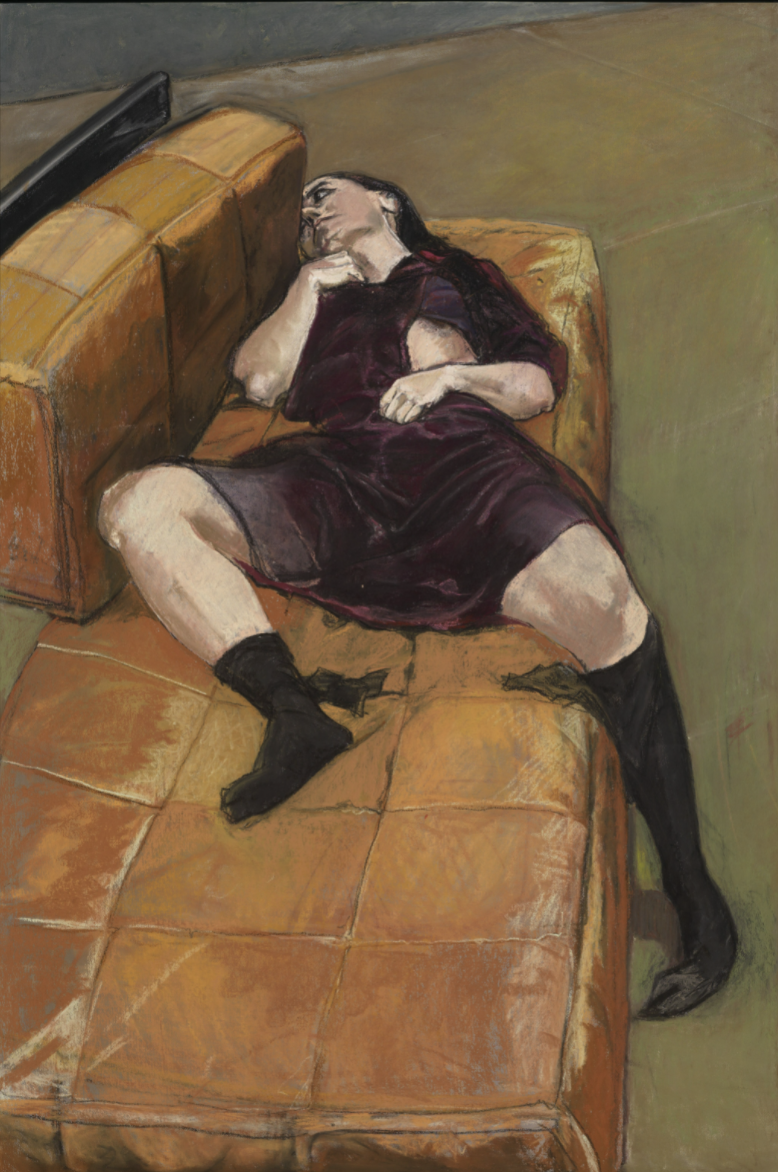Paula Rego exhibition, Tate Britain, review ★★★★★
Tate Britain spotlights Paula Rego’s visceral, unflinching image-making in the most comprehensive retrospective of her work to date
Paula Rego: The Dance, 1988 © Paula Rego
Paula Rego is a phenomenal storyteller. Whether in paint or pastel, collage or ink, she conjures up strident images that speak of personal as well as social struggle. They feature saturated colours and deftly coded messages – referencing jealousies, affairs, adulteries, grief, politics– that reveal the intimate relationship between Rego’s life and art. They also reflect on the artist’s passionate commitment to denouncing injustices and to redefining the way women are portrayed.
Tate Britain’s major retrospective of Rego’s work gives Londoners the opportunity to see 17 important works never shown in the UK before.
It includes everything from early work dating from the 50s to large pastels and richly layered, staged scenes from the acclaimed Dog Women and the extremely raw and powerful Abortion series, that depict young women in the aftermath of illegal procedures. The series eventually became part of the public discourse during the referendum in Portugal that took place in 2007.
A whole room is dedicated to Rego’s large polyptych Possession I-VIII 2004, a reflection on women’s who used to be diagnosed with hysteria, a term used to describe a wide range of psychological conditions and that has shaped prejudices about women’s assumed weak mental constitution.

Possession I2004 Collection Fundação de Serralves – Museu de Arte Contemporânea, Porto, Portugal © Paula Rego
Born in Portugal in 1935, Rego attended a finishing school in England before enrolling at the Slade School of Fine Art, where she had a passionate but tumultuous affair with her married tutor Victor Willing. They would go on to have three children together, as well as countless adulterous affairs and an increasingly fractious relationship.
Her image-making is equally fragmented. Rego explored abstraction throughout the 60s, expanding her spectrum to include cartoonish creatures and characters executed as cut-out forms. Satirical political and personal references were subtly interwoven, too. By the late 80s her style had shifted towards figuration. She explored stage-like landscapes and domestic interiors, as well as the possibilities of pastel, volume, shading and light. It was around that time that she began to bestow upon her characters a sense of introspection and self-awareness that revolutionised the way in which women, in particular, were represented.
Tate Britain’s major retrospective of Rego’s work gives Londoners the opportunity to see 17 important works never shown in the UK before.
It includes everything from early work dating from the 50s to large pastels and richly layered, staged scenes from the acclaimed Dog Women and the extremely raw and powerful Abortion series, that depict young women in the aftermath of illegal procedures. The series eventually became part of the public discourse during the referendum in Portugal that took place in 2007.
A whole room is dedicated to Rego’s large polyptych Possession I-VIII 2004, a reflection on women’s who used to be diagnosed with hysteria, a term used to describe a wide range of psychological conditions and that has shaped prejudices about women’s assumed weak mental constitution.

Possession I
Born in Portugal in 1935, Rego attended a finishing school in England before enrolling at the Slade School of Fine Art, where she had a passionate but tumultuous affair with her married tutor Victor Willing. They would go on to have three children together, as well as countless adulterous affairs and an increasingly fractious relationship.
Her image-making is equally fragmented. Rego explored abstraction throughout the 60s, expanding her spectrum to include cartoonish creatures and characters executed as cut-out forms. Satirical political and personal references were subtly interwoven, too. By the late 80s her style had shifted towards figuration. She explored stage-like landscapes and domestic interiors, as well as the possibilities of pastel, volume, shading and light. It was around that time that she began to bestow upon her characters a sense of introspection and self-awareness that revolutionised the way in which women, in particular, were represented.
TRY CULTURE WHISPER
Receive free tickets & insider tips to unlock the best of London — direct to your inbox
| What | Paula Rego exhibition, Tate Britain, review |
| Where | Tate Britain, Millbank, London, SW1P 4RG | MAP |
| Nearest tube | Pimlico (underground) |
| When |
07 Jul 21 – 24 Oct 21, 10:00 AM – 6:00 PM |
| Price | £- |
| Website | Click here for more information |